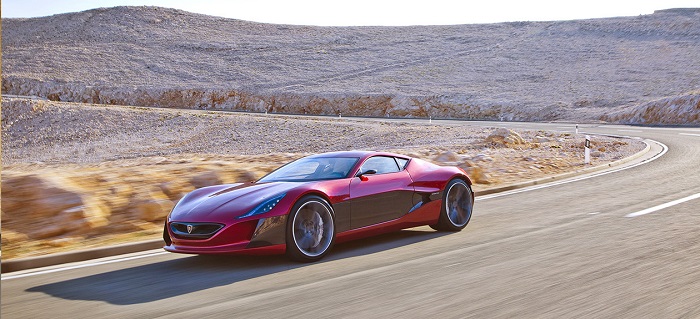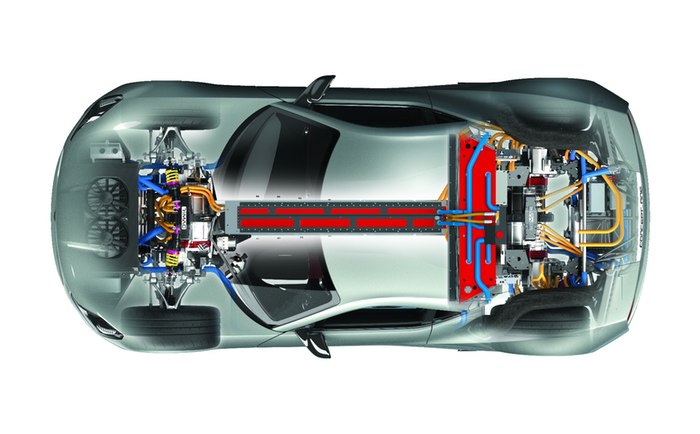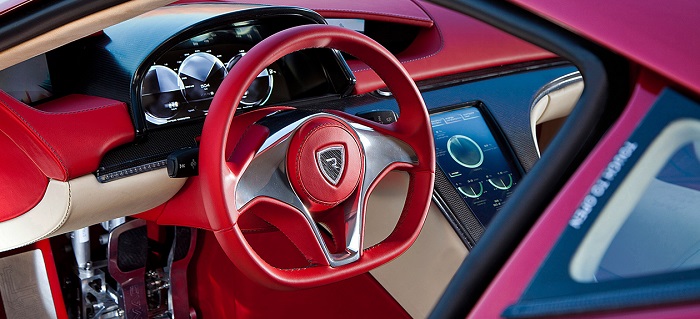While not scheduled to make its official debut until early next month at the Geneva Motor Show, Rimac Automobili’s Concept_One is already grabbing headlines, due in large part to the fact that it is now being considered the world’s fastest electric car.


Two things to note about the Concept_One—first is the fact that yes, this car is in fact faster than any Tesla vehicle (for now). Second, the underscore is part of the official name.
So, how fast is the Concept_One? Well, its 1,088-horespower engine, provided by an 8,450-cell battery pack, can go from 0 to 62MPH in approximately 2.6 seconds, with a top speed near 220MPH.
For comparison purposes, the 2015 Tesla Model S P85D with “Ludicrous Speed” upgrade, was recorded going from 0 to 60MPH in 2.8 seconds. The vehicle’s software limitations keep top speeds at a maximum of 155MPH.
Getting into the specifics as to what makes the Concept_One so unique — its electric motor is a customized take on permanent magnet synchronous motor generation. For those unfamiliar, it’s a generator where the excitation field is created by a permanent magnet instead of a coil. In terms of it being “synchronous”, the rotor and magnetic field rotate with the same speed because the magnetic field’s being generated through a shaft-mounted permanent magnet component, and current is being induced into a stationary armature.
Also, it’s worth noting the car’s powertrain is divided into four sub-systems. Each one consists of a motor, inverter and reduction gearbox, and each of these systems is tasked with driving one of the car’s wheels, completely independent one from the other. Specially designed engine control units are included to govern each system, and they draw on input provided by dozens of sensors placed all over the car. Referred to by the company as “All Wheel Torque Vectoring”, this unique architecture was designed provide better vehicle dynamics; specifically, each wheel can accelerate or decelerate hundreds of times per second so as to provide the driver with the desired handling he / she is seeking.
And so long as we’re talking about the car’s speed and power, it’s worth mentioning its brake system. There are carbon-ceramic brakes located at each wheel; when the system is engaged, it acts like ABS system. During deceleration, the brakes can generate up to 400kW of regenerative braking power, meaning the car is able to generate 0.6G when slowed by the system.
Obviously, the amount of power being used for acceleration / deceleration puts a ton of strain on the car’s battery system. To address this issue, Rimac developed an 82kWh battery pack for the car. Its 8,450 cells are designed to deliver 1MW during acceleration, and absorb the aforementioned 400kW when slowing down. Each cell is individually managed, and the battery as a whole is liquid cooled.

Couple the system with the car’s low center of gravity, extremely high torque, and the lack of shift interruptions, the Concept_One is advertised as offering a driving experience unlike anything else on the market.

Unfortunately, there will not be a lot of Concept_One cars produced. Rimac plans to produce just eight models, and six are already sold (for just shy of $1 million USD each).
Learn more about the Concept_One at Rimac-Automobili.com
Advertisement
Learn more about Electronic Products Magazine





